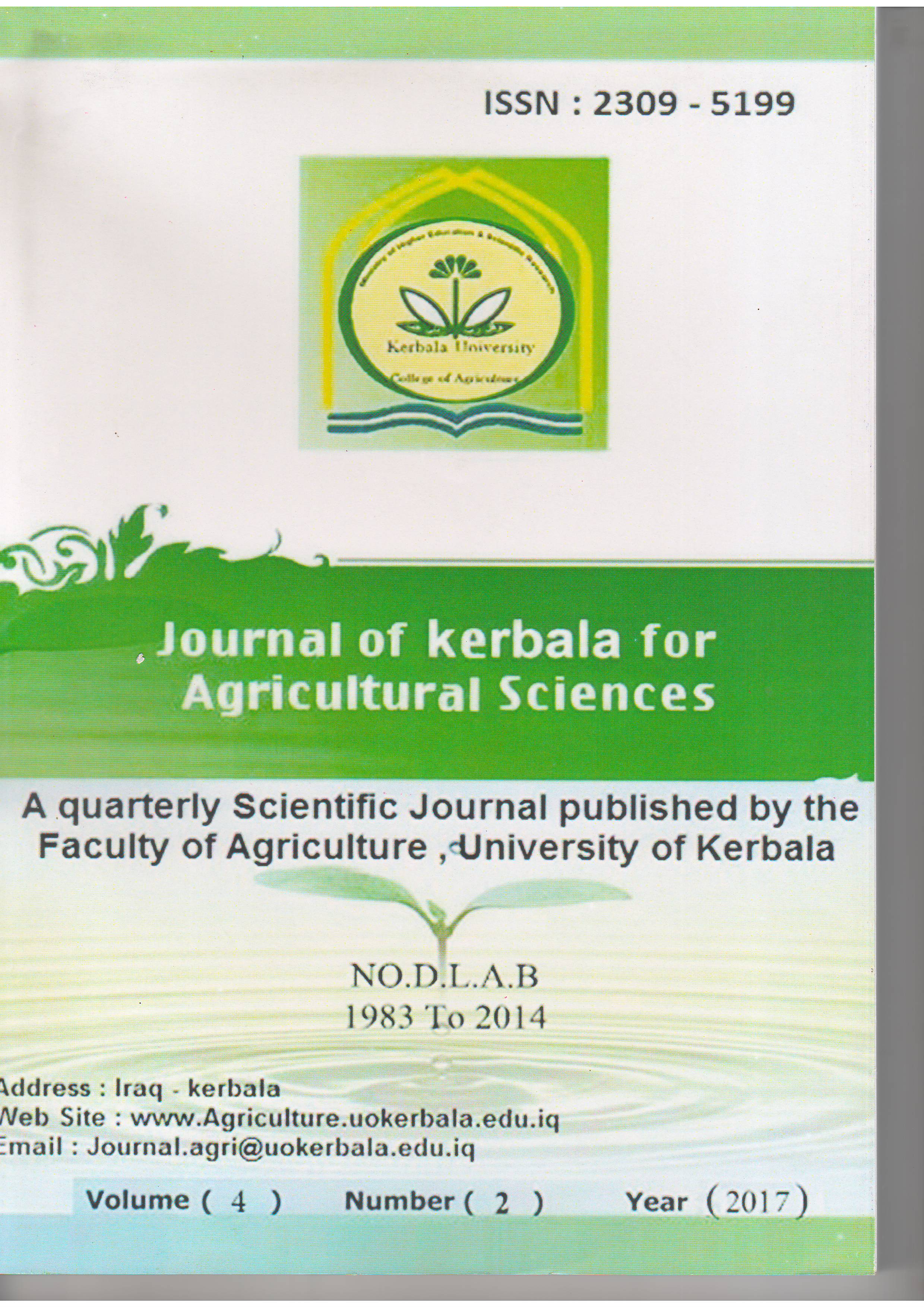Role of Bio Fertilization in Reduction of Water Stress in Growth Characteristics of Mung bean (Vigna radiata L.)
DOI:
https://doi.org/10.59658/jkas.v4i2.225Keywords:
Mung bean Crop, Irrigation Treatments, Bio Fertilizer, Leaf AreaAbstract
A field study has been conducted during autumn season of 2016 at Karbala province of Hindia by mungbean crop Vigna radiate L. to study the interrelated effect of both the Mycorrhizal fungi (Glomus mosseae ( and the Rhizobial bacteria ( R.leguminosaru (Under levels of water stress. Three treatments of irrigation are used ; (S1 irrigation every 5 days and S2 irrigation every 10 days and S3 irrigation every 15 days) and four levels of Bio fertilizer are used (without inoculation)(C0) and (Rhizobium inoculation)(R) and (mycorrhizal inoculation)(M) and (the interaction between mycorrhizal and Rhizobium)(M+R). A split plot in randomized complete block design is used with three replications. Treatments of irrigation are used as main plots while Bio fertilizer levels are used as sub-plot. Least significant difference (LSD) at 5% probability is used to compare the means. The results showed irrigation every 5 days (S1) was superior in having the highest average of (plant height, leaf area, relative water content of leaves, root length, dry weight of roots, and infection Mycorrhizal inoculum) Amount (50.63 cm. Plant-1, 576.4 cm2. Plant-1, 74.68 %,17.79 cm. Plant -1 , 0.78 gm. Plant-1, 58.9%) respectively. While Biofertilization treatment (mycorrhizal and Rhizobium)(M+R) showed its superiority in all characteristics. The interaction among (R+M)S1,(R+M)S2 and (M)S1 significantly give the highest means for all plant characteristics.
Downloads
Published
How to Cite
Issue
Section
License
Copyright (c) 2017 Copyright (c) 2024 is the Author's article. Published by the Journal of Kerbala for Agricultural Sciences under a CC BY 4.0 license

This work is licensed under a Creative Commons Attribution 4.0 International License.
Licensing Terms
All articles are published under a Creative Commons License and will be directed to the Creative Commons Attribution 4.0 International License (CC BY 4.0) That permits use, distribution, and reproduction in any medium, provided the original work is properly cited. This license also allows the work to be used for commercial purposes.
Use by both non-commercial and commercial users
This content is licensed under a Creative Commons Attribution 4.0 International (CC BY 4.0) license, permitting use by both non-commercial and commercial users. Individual users may access, download, copy, display, and redistribute the articles to colleagues, as well as adapt, translate, and text- and data-mine the content, subject to the following conditions:
- The author's moral rights, including the right of attribution and the right to protect their work from derogatory treatment, are respected.
- Where content in the article is identified as belonging to a third party, users must ensure that any reuse complies with the copyright policies of the owner of that content.
- If the article content is reused for research or educational purposes, users should maintain a link to the appropriate bibliographic citation, including the DOI and a link to the published version on the journal's website.






